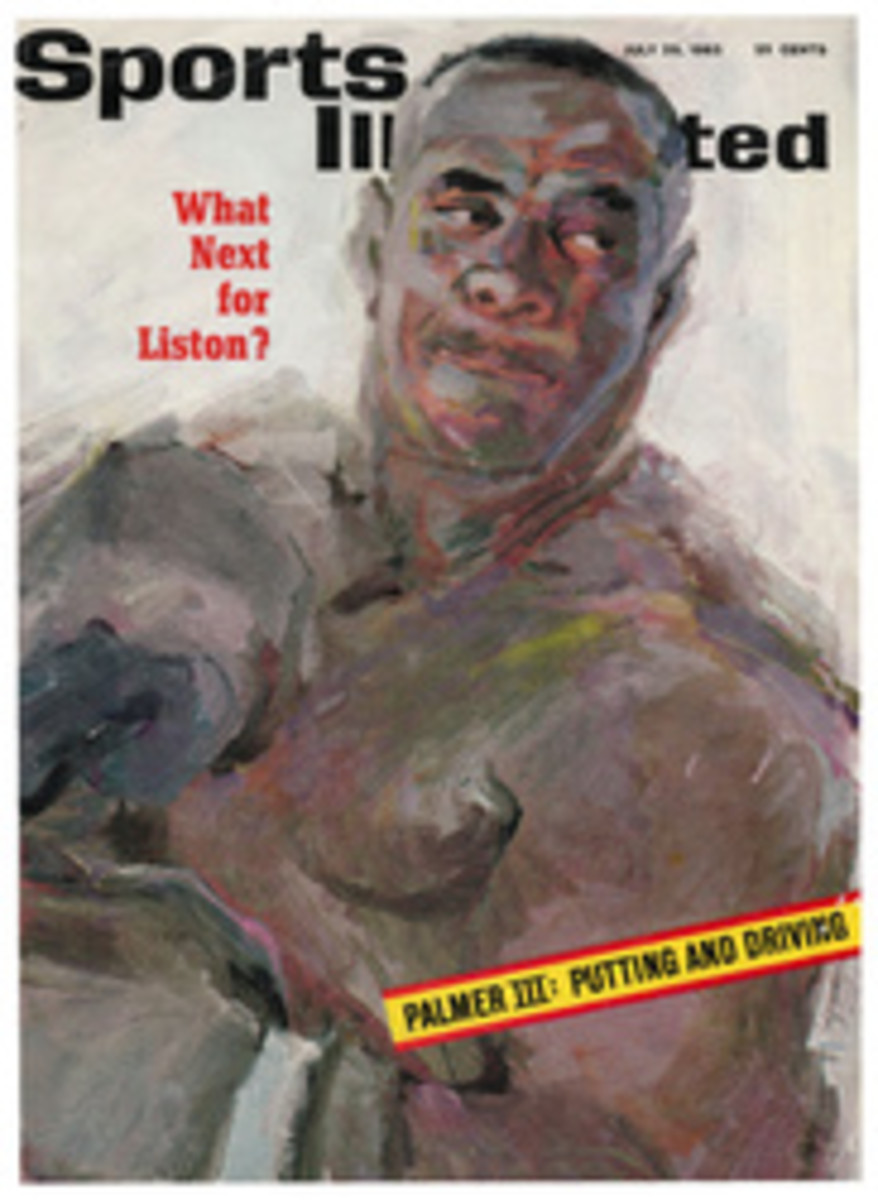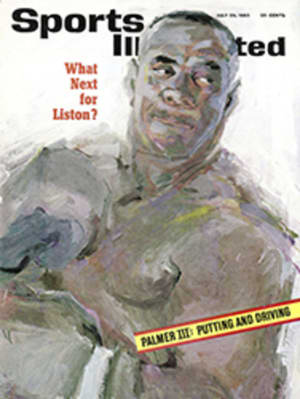
Some signs of danger in the air
Fifteen miles off the New Jersey coast recently, a group of scuba divers anchored their 65-foot rented boat Sea Jet and prepared to spend a day exploring a sunken wreck that lay on the murky bottom 200 feet below. Leading the expedition was John Light, at 30 one of the best professional divers in the world. He was accompanied by Palmer Williams, a man who once helped Light explore the wreck of the Lusitania more than 300 feet down (SI, Dec. 24, 1962), plus two Navy divers and five amateurs out for the sport of it. The amateurs had never gone below 100 feet before, but with Light along their only concern was sharks, not the depth. The party saw no sharks. What it suddenly did encounter was a more subtle and more deadly danger, one that the country's half-million scuba divers rarely consider and one that merits additional attention: the compressed air in their tanks was contaminated.
After the Sea Jet anchored over the wreck, the divers put down a weighted line, paired off and began their descent. At 90 feet, Light suddenly became dizzy and confused. As he recalls it:
"I looked at my depth gauge, expecting it to read at least 170 feet. But the needle pointed to 90. I had tunnel vision—it was like looking through a narrow pipe. I started down again. At 130 feet I had almost no control over my actions. I went 20 feet back up the line and stopped there for 15 seconds. Then I dropped back down to 130 feet. There I felt like I had run into a wall. I was really in trouble. I started back up and dimly saw the tanks of another diver. I reached out to touch him. What I touched felt like a piece of wood, though I learned later that it was his neck. When I reached the surface, I was very weak and dizzy."
Most of the other divers suffered similar effects—double vision, confusion and dizziness. Palmer Williams got to 170 feet, where he was just as severely stricken as Light, and struggled back to the surface. But the two Navy divers went to 200 feet without difficulty.
Light and Williams at first thought they had suffered extreme nitrogen narcosis, which produces an intoxicating effect causing various changes in a diver's mood. But the fact that the Navy divers' air supply had come from a different compressor than that used by all the other divers made the civilians' air suspect. Commander Walter F. Mazzone, a Navy diving physiologist and a friend of Light's, agreed. He was convinced the divers had suffered from breathing excessive amounts of carbon monoxide and carbon dioxide.
Like most scuba divers, Light and his party had gotten their air from a compressor at a sports store—this one in Belmar, N.J. Light and Mazzone went to the store and got the owner to take a tank of the air to Dr. Raymond A. Biernacki, director of the Ocean County Medical Laboratories in Brick Town, N.J. Dr. Biernacki put a mouse in a jar and fed air directly from the tank into the jar. In 15 minutes the mouse was dead. Less dramatic tests showed that the suspect air contained more CO and CO[2] than the maximum concentrations recommended by the Navy.
Understandably concerned, the owner of the sports store immediately shut down his compressor, overhauled it and finally came up with a tank of air that passed Dr. Biernacki's tests. The following day Light took two tanks of the now presumably pure air and went diving again. At 60 feet, he once more experienced dizziness and loss of control. "I felt like I was falling," Light remembers. "I couldn't seem to guide a camera I was holding. T raced up the line knowing if I didn't get to the top immediately I would black out. I was barely conscious when I reached the surface and breathing like a racehorse. I was lucky to get there." Another diver, Harold Harris, had fuzzy vision and sharp head pains from the same air. Light went back to Dr. Biernacki with the tanks he was using. The air was worse than ever. This time a mouse died in 6 minutes. Said Dr. Biernacki: "A man who breathed this air under pressure—where the effect is magnified—would be dead within 45 minutes." An excess of CO can cause a diver to black out underwater without giving him any warning. A diver usually experiences labored breathing from too much CO[2], a symptom that can serve as a warning. What had made the air bad? Very likely the compressor, an electric, oil-lubricated machine converted from a military-surplus unit not designed for pumping breathable air. The air would get contaminated if high cylinder temperatures caused combustion of the oil, resulting in vapors containing CO and CO[2]. (In a gasoline-operated compressor, exhaust fumes as well as oil vapors can contaminate air.) The store owner junked his compressor and bought a new one.
Next, four other stations in New Jersey's Monmouth and Ocean counties were tested by Dr. Biernacki, and none of the air was found to meet Navy requirements for purity. The New Jersey State Health Department became concerned. In the past two years a number of scuba divers have died in Jersey waters. In most cases, the cause of death was listed as drowning. But the question was now raised as to whether breathing excess amounts of CO or CO[2] might have preceded the actual drowning and caused it. Last week, after consulting with the Navy, Dr. Roscoe P. Kandle, the State Health Commissioner, recommended that the state set certain purity standards for compressed air sold to divers. Simple portable testing devices are available to test such air. And Dr. Biernacki went even further. "Compressed air is a drug," he said. "It should only be sold by licensed people who understand its chemical content and the compressors it is pumped by. These should be water-cooled and not oil-lubricated."
Meanwhile, divers should be giving considerably more attention to where they buy what they breathe. The air they carry on their backs may be deadly enough to kill mice—and men.

